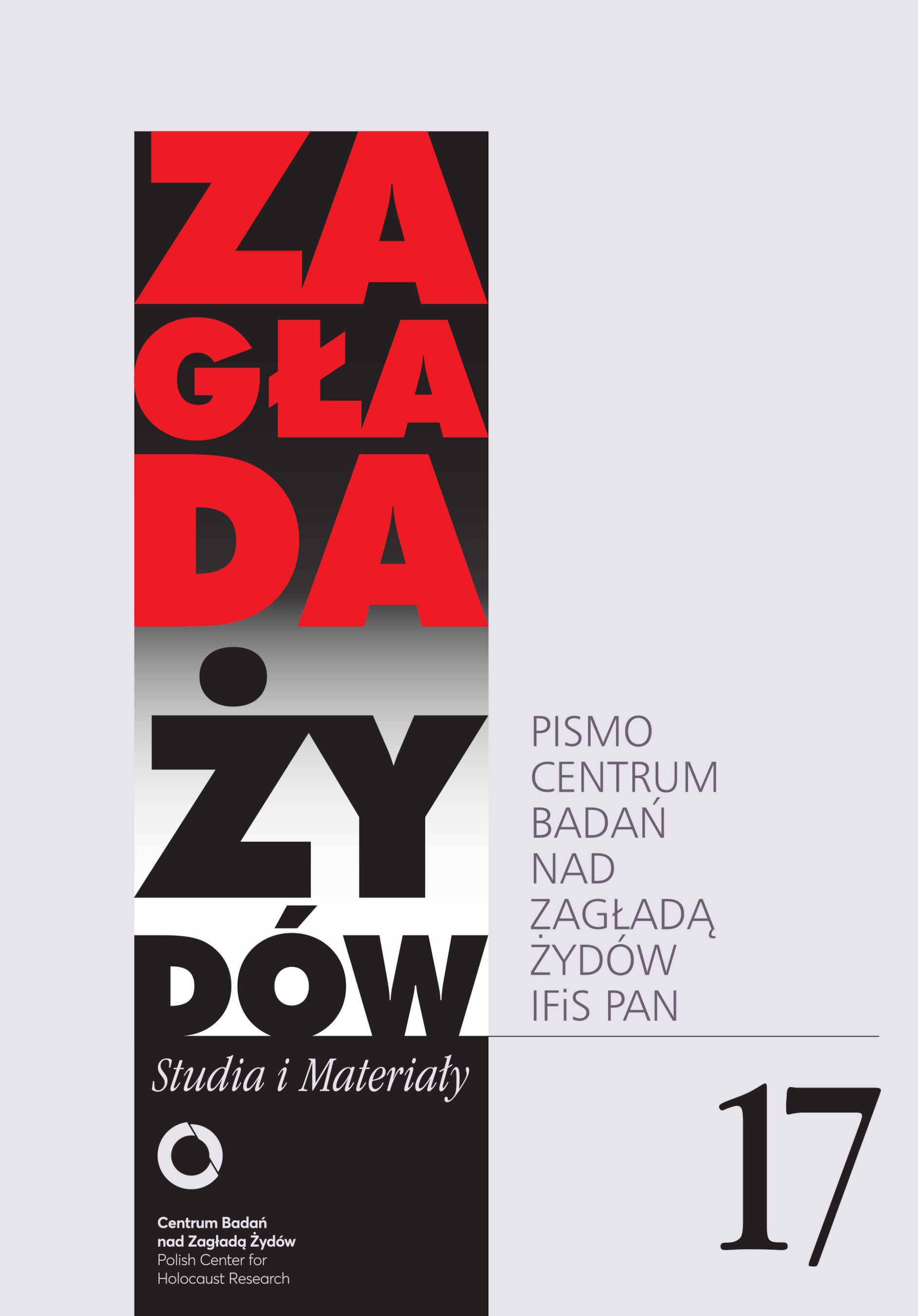Zagłada Żydów. Studia i Materiały, No. 17 (2021), Pages: 486-522
In pre-war Poland there was a large group of Jewish collectors and owners of works of art, paintings in particular. The names of some of them appeared in the catalogs of prestigious exhibitions organized in Warsaw, Cracow or Lviv, while many others did not make their collections publicly available or have done so incognito. Almost all of them perished in the Holocaust, and their works of Polish (including Polish-Jewish) and foreign artists and their entire assets were lost as a result of Nazi confiscation or misappropriation by non-Jewish population. After the war, the existence of this deserving group for culture and art was completely erased from collective memory.
It was only recently that the first publications devoted to certain representatives and communities of Polish Jewish collectors were published, combined with attempts to reconstruct their collections. These are isolated cases because they require difficult and often not fruitful archival research. One example of such an extensive and largely unresearched archive material is cited by the author of war loss questionnaires kept in many national archives. However, their usefulness in examining individual collections and their fate, as well as the fate of their Jewish owners, is limited. In this context, the greater is value of compensation files based on the the Federal Restitution Law (BRüG) adopted in 1957, held in the Berlin State Archives, since significant part of the holdings are applications of Polish Jews regarding their movable property appropriated by the Third Reich. This archive material, which has not yet been explored by Polish researchers, is a highly wealthy source of knowledge in many respects. There are files of tens of unknown (or completely forgotten) Polish Jewish art owners, including undeniable collectors. The compensation claims submitted by them or their descendants in the late 1950s and 1960s in West Berlin provide plenty of data on German robbery and its mechanisms; they sometimes include information on the origin of the collections, a list of lost works of art or their detailed description. The Berlin archives also allow you to learn about the occupation-time and post-war fate of the robbed owners, as well as their pre-war status, lifestyle and the character of their collections. The author, on the basis of three claims by Cracow collectors, shows the significance and wealth of the sources discovered in Berlin: Artur Wohl, the lawyer Schilim Jung, and the owners of the carpet factory Jakub and Regina Mikenbrun.
 English
English
 Język Polski
Język Polski



